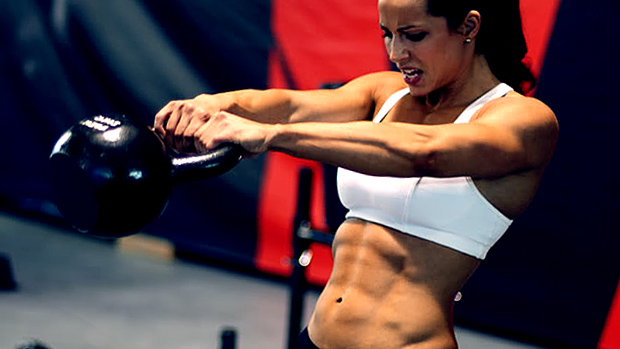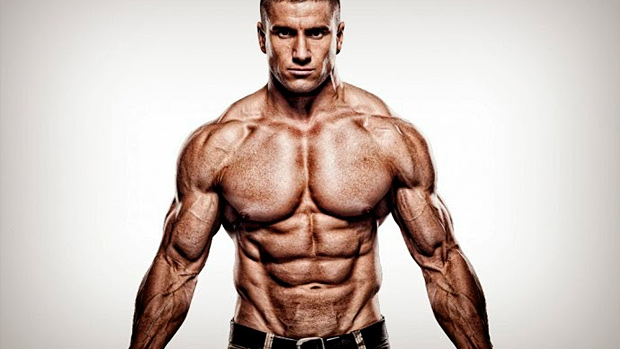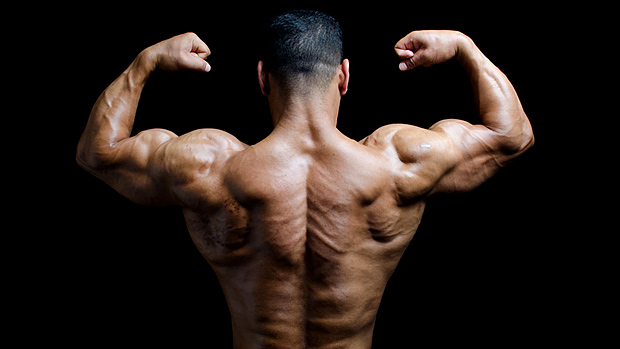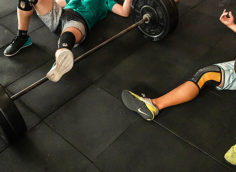Here's what you need to know...
- The stage system includes multiple levels of loading on a given exercise. The first stage is performed heavy. The second stage is performed lighter.
- This system takes advantage of post-activation potentiation (PAP). Basically, heavy loading on a few sets will improve your performance with the submaximal loads that follow.
- This approach works better with exercises like squats, deadlifts, presses, rows, and chin-ups. Don't use it for small muscle groups like biceps.
- By changing a few training variables, the stage system can be used to focus primarily on strength, hypertrophy, or speed.
Choose: Strength, Size, or Speed?
The stage system is one of the most versatile programming strategies around.
Training for scary strength? It excels at that. Training to build size so you can upgrade those extra-medium T-shirts? It can be adjusted for hypertrophy. Want to get faster for sports? The stage system has you covered.
What Is The Stage System?
The stage system includes multiple levels of loading on the first big exercise of your workout. It's simple: The first stage (2-3 sets) is performed heavy. The second stage (1-2 more sets of the same exercise) is performer lighter.
A few examples of how these stages might play out:
- 2x3 (heavy, slower), 2x6 (slightly lighter, slower)
- 2x3 (heavy, slower), 2x3 (light, fast)
- 3x2, 1x5
- 3x3, 1x8
How It Works
The super simple explanation: Lifting really heavy stuff makes magical things happen!
The more complex reason: Lifting heavy weights – especially in more experienced lifters – recruits more high-threshold motor units. That means you're recruiting more muscle fibers with heavy loading.
Additionally, heavy contractions may also increase sensitivity of muscle fibers to calcium. Basically, recent performances leave a "stamp" on your nervous system and individual muscle fibers. That transient change can boost subsequent performance through a process known as post-activation potentiation (PAP).
Historically, all the attention with respect to PAP has been devoted to how it can impact subsequent power production. In other words, a heavy set of squats may help you get a bit higher on subsequent vertical jump attempts.
However, what a lot of people have overlooked is that heavy loading can improve subsequent performance with all submaximal loads, not just those used for power training.
That means your heavy loading can improve your ability to get in more quality volume-oriented work at a higher percentage of 1RM to pack on muscle mass.
It's yet another example of how – all other variables held constant – a stronger lifter will have the potential to also be a bigger lifter.
To make the most of the stage system, though, we have to understand how to apply it correctly with each goal.

Rules of the Stage System
Only use the stage system for one of the exercises in a training session. It should always be the first exercise of a given training day.
The reason? Your first "stage" has to be heavy, so the last thing you want to do is perform it as the second or third exercise of a workout when you're already fatigued.
As such, this approach lends itself better to compound exercises like squats, deadlifts, presses, rows, and chin-ups. Don't use it for direct arm work or calf training.
Additionally, the stage system doesn't lend itself well to supersetting because the potentiation is short-lived. Potentiation lasts 3-10 minutes, and 10 is pushing it. Plus, adding another exercise adds more fatigue to the equation, and that can reduce the benefit.
Your first stage (the heavy one) should always be for multiple sets.
Research has demonstrated that PAP is optimized with more than one set. It's almost as if it takes a few sets to wake the nervous system up.
While your first stage should be heavy, it shouldn't be absurdly heavy.
Rule of thumb: You want the concentric (lifting) component of the lift to be completed in under 3 seconds, assuming you're attempting to move the bar as fast as possible.
As an example, I'd call this lift slightly too slow. The PAP effect probably would be better if I'd been working at 575 pounds instead.
Your weight selection will also be governed by your training goal:
- Strength Goal: Work heavier and do more sets of 1-2 at or above 90% of 1RM for the first stage.
- Speed Goal: Work in the 65-85% range with great bar speed.
- Size: 80-90% range.
Aside from the strength-related folks, the goal of the initial stage is completely about creating the heavy side of the contrast to optimize the PAP effect.
Always take your time between stage 1 and stage 2.
Fatigue is your enemy when it comes to optimizing subsequent performance. Heavy sets should make you feel strong and athletic, but not fatigued.
If you're tired when you go to the second stage, it's either because you went too heavy on the first stage, or you simply haven't rested long enough before proceeding to the second stage.
How to Choose Your Weights
So, how much should the drop-off be from first stage to the second stage? It'll depend on your training history as well as individual differences in muscle fiber types.
The more slow-twitch you are, and the greater your history with bodybuilding and endurance type activities, the smaller the drop-off.
The more fast-twitch you are, and the greater your history with lifting really heavy weights, the bigger the drop-off will need to be.
As a general rule of thumb, drop about 3% per rep. Let's use a 2x3, 2x6 stage system bench press as an example:
- 300x3
- 300x3
- 270x6 (since 91% of 300 is 273)
- 270x6 (could've been moved up or down depending on how the first set of 6 went)
Warm-Ups and Intensity
Don't count anything less than 90% of your best weight for the day on the first stage. In other words, using the 2x3, 2x6 example again, if you'd hit a set of 250x3 on your warm-up to the sets of 300x3, don't bother counting it.
This is more of an issue with intermediate lifters who have to "feel out" where their strength stands. You simply won't get the benefits if the sets in your first stage aren't heavy or plentiful enough, so don't count things until the going gets tough.

Using the Stage System for Strength
Ask yourself this question:
Is the limiting factor of my strength due to neural efficiency or cross-sectional area (muscle size)?
If you aren't neurally efficient, do more work in the first stage. This is most common in intermediate athletes who may look big, but not be that strong.
If you need to get bigger to get stronger, devote more attention to the second stage. This would be more applicable to an accomplished lightweight lifter who wants to bump up a weight class.
Examples for both scenarios:
Bigger Athlete in Need of Neural Efficiency to Get Stronger
- 6x1, 2x3
- 8x1, 1x4
- 4x2, 1x5
- 3x2, 2x5
- 3x3, 1x6
As a rule of thumb, stay with three reps or less on sets in the first stage, and with six reps or less on the second stage.
Neurally Efficient Athlete in Need of Size
- 4x4, 2x8
- 3x3, 2x8
- 3x2, 3x6 (the third set is extra difficult because the effect is wearing off)
- 5x4, 1x8
Stay with 2-4 reps on sets in the first stage, and with 5-8 reps on the second stage.

Using the Stage System for Size
Using the stage system to build size is very similar to the second strength scenario above, but you have a lot more wiggle room to do some crazier stuff on your second stage.
- 4x4, 2x7
- 3x4, 2x8
- 3x3, 3x6 (again, the effect wears off by the third set, so it'll suck extra)
- 5x5, 2x8
- 4x5, 2x10
- 5x5, 1x15-20
Stay with 3-6 reps on sets in the first stage, and with 6-20 reps on the second stage.
Note: If you get really bold with huge back-off sets, you won't be able to get in a lot of quality work for the rest of the session.
The 15-20 rep set in the last scenario is a good example. If you do this on a set of squats, don't expect to be able to go and do deadlifts with appreciable loading or volume as your second exercise of the day.
Use high-rep back-off sets sparingly. They sound sexy, but if you go back and look at your training logs, you'll realize that you actually get in more high-quality training volume over the course of a session when your second stage work is in the 6-10 rep range.
Remember, the goal is to use this approach as a strategy for making your training program denser – more volume in less time.
Using the Stage System for Speed
If your goal is improving power, you're not technically going to be using the stage system. Rather, you'll be doing complex training.
It might sound like wordplay, but with the stage system, all sets are done with the same exercise. With complex training, the heavy loading comes with one exercise, while the lighter (or unloaded) portion occurs with another movement.
An example would be doing heavy squats, then moving to either a lighter jump squat or a bodyweight-only vertical jump. The effects are comparable, but just with different exercises.
You can, however, still use the stage system for improving strength-speed – very important for long-term powerlifting improvements. If you can move a bar faster, you'll like your chances of completing the lift a lot better.
A good approach here is 4x1, 4x3, although the total number of sets on the first stage can fluctuate from week to week within a monthly program.
The singles in the first stage will be at about 90% of 1RM, whereas the "back-off" sets of three are at 60-70% with the focus being on perfect technique and bar speed.
This approach works really well with deadlift training. In particular, this is a great option on the days when you're just not feeling great and the bar speed seems slow. Cut short your heavy stuff and just try to be as fast as you can with perfect technique at a submaximal load.
As noted, you can shift things around with this approach and incorporate some variety with respect to heavy/slow to lighter/faster transition schemes. Just remember that the potential will wear off, so you likely won't see a ton of benefit doing more than 5-6 sets on your second stage.





